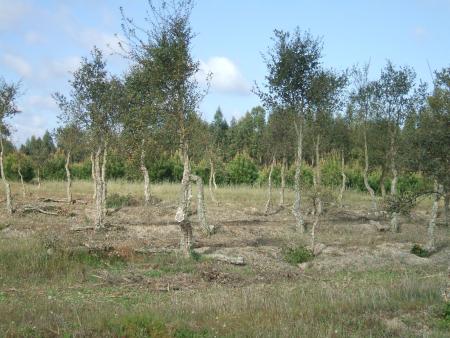
Objective:
The formation pruning is an operation usually defined in forest management plans established for cork oak stands plantations. It aims at removing tree branches, usually the lower ones, therefore promoting the development of a long-straight stem, at least up to the expected future debarking height. This will later on facilitate cork harvesting operations.
It is unclear if the pruning intensity affects the tree growth. This factsheet shows the results of a case study where tree growth was compared between trees not pruned, and trees subject to two pruning intensities.
Context:
An experimental trial was conducted in a young cork oak plantation located in Montargil, with 420 trees/ha and understory vegetation dominated by Cistus spp. Soils are classified as Arenosols, with 192 cm soil depth and sandy texture.
Each tree was randomly attributed one of the following pruning intensities: no pruning, low (less than 1/3 of the tree crown removed), high (1/3 of the tree crown removed). The trees within the plot were measured before pruning – at 12 years of age, after pruning – at 15 years, and five years later – at 20 years. The tree response variables considered were: diameter over cork (dbh, cm) and the total height (h, m).
Contacts:
Joana Amaral Paulo (joanaap@isa.ulisboa.pt)
Sónia Pacheco Faias (soniapfaias@gmail.com)
Further information:
Boas Práticas de Gestão em Sobreiro e Azinheira [ZIP 5 MB]
Folheto sobre podas [ZIP 2,8 MB]
Altura do descortiçamento. Uma decisão com consequências no valor da cortiça [PDF 2 MB].